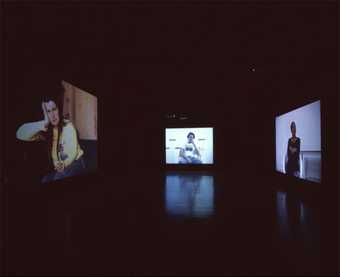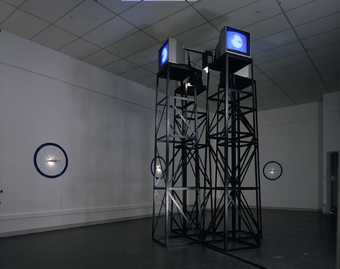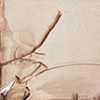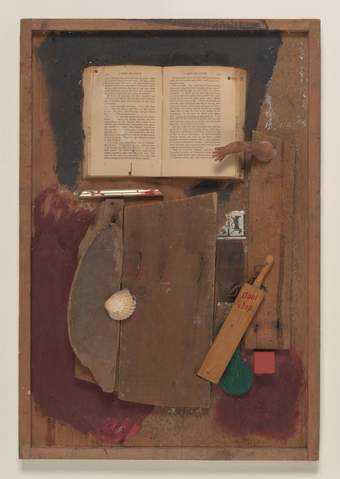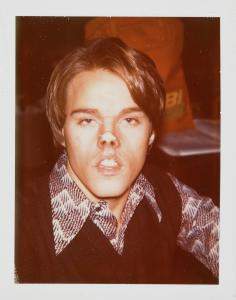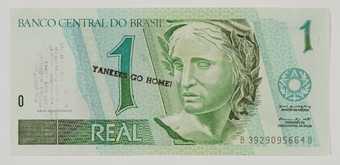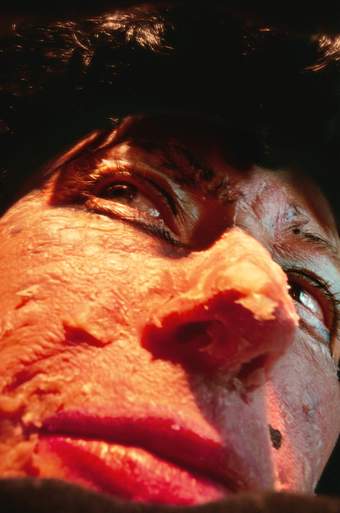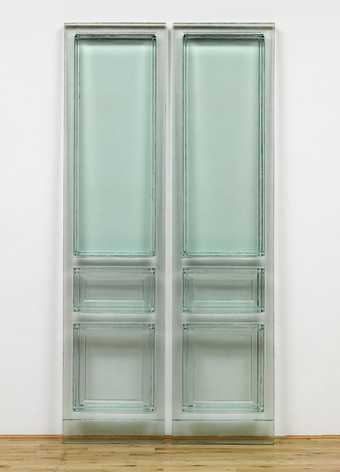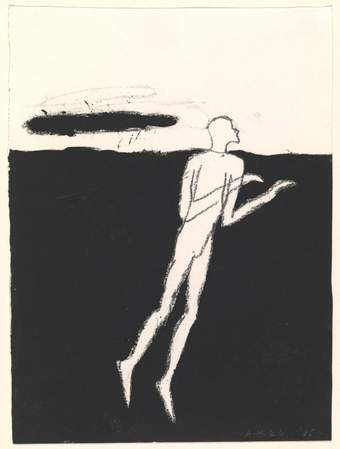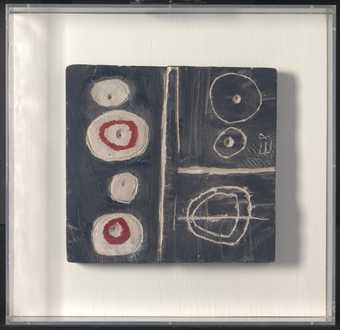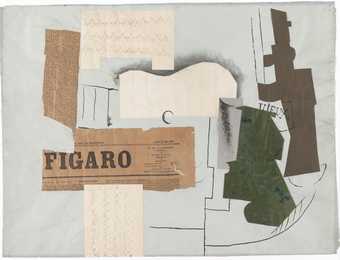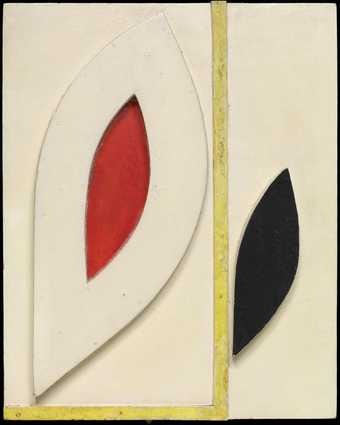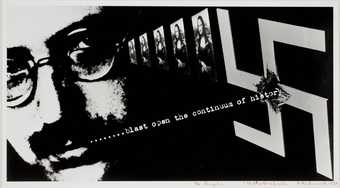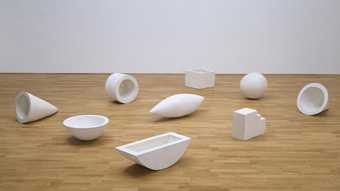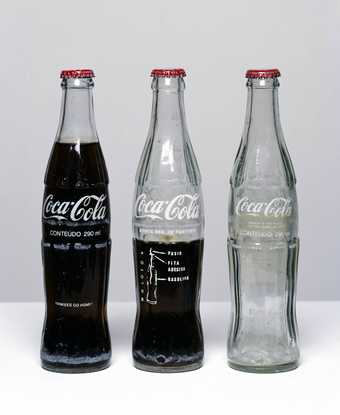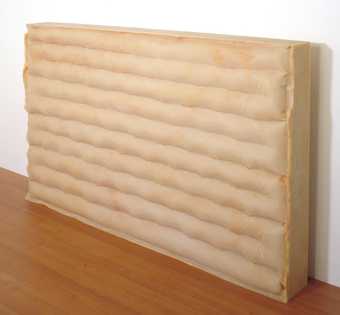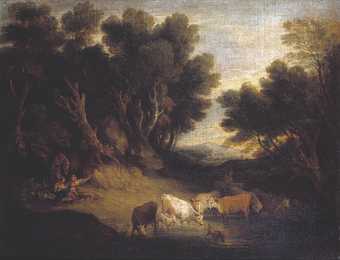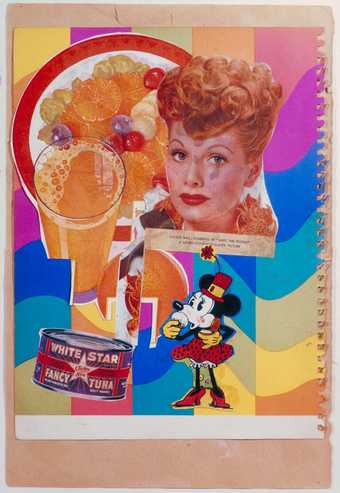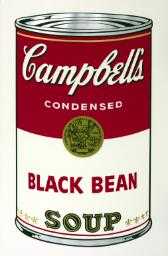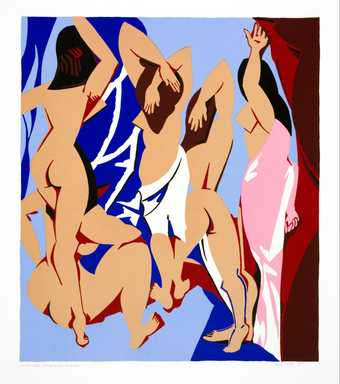
Patrick Caulfield
Les Demoiselles d’Avignon vues de derrière (1999)
Tate
© The estate of Patrick Caulfield. All Rights Reserved, DACS 2025
Benjamin first used the word in his essay The Work of Art in the Age of Mechanical Reproduction, where he describes an original work of art as having ‘authenticity’. By this he means it has a presence in time and space, and a unique existence in the place it happens to be.
A reproduction of a work of art lacks ‘authenticity’ as it is not possible, when reproducing the work of art, to establish the exact conditions in which the original artwork was created. But it is possible, by reproducing a work of art, to call into question the original artwork’s authenticity, as reproducing it has undermined the artwork.
For this reason an original work of art is considered by the art market to have a higher value over a reproduction because it contains this authenticity.
Authenticity can also relate to forgery, in order to establish whether or not a work of art was actually created by the artist it pertains to be by.
Walter Benjamin in focus
Walter Benjamin was one of the most influential cultural critics of the twentieth century. He was also a talented broadcaster…
When Walter Benjamin fled Germany in 1940, he left behind a cache of papers amongst which were the scripts for an extraordinary series of radio broadcasts for children covering everything from toy collecting to the politics of tenement housing, from the psychology of witch hunts to human responses to natural catastrophes.




